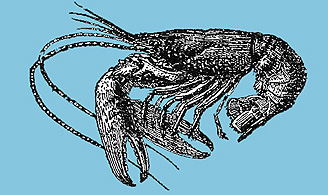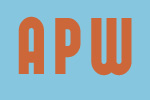Writing the Mythology of Animals and Birds
Instructions
Have you a favorite animal? Were you to inhabit the form of an animal or a bird, what would you become?
Have you ever wanted to fly? Roar? Swim with dolphins?
In the exercise below, you will have the chance to become any animal or bird you wish, and make a poem about it.

In this poetry exercise, you are guided in the process of writing three basic stanzas. You are most welcome to expand beyond the three basic stanzas to make a larger poem, as you like. Each of the three stanzas begins with an adverb to describe when an action took place; arranged sequentially, the adverbs begin stanzas that show a progression of time from past, to present, to future.
The three stanzas begin as follows:
- Once coyote was a falcon ...
- Now with his cry of thorns ...
- Soon they will fly into the woods ...
Traditional myths tells of ostensible historical events that serve to unfold part of the world view of a people, or they serve as an explanation of a practice or belief of natural phenomenon. How did raccoon get his ringed tail? How was the earth created? The call of the song sparrow, who gave it to her?
Myths and legends abound in the history passed down from the stories and teachings of the Elders of Turtle Island - the First People of America and Canada. Here is one Wasco legend of Coyote, describing how the stars were placed in the sky.
In this exercise, you create a mythology of your favorite animal, and in the process of speaking about your favorite animal, explore some of your own personal mythology.
Here's how.
Imagine that you have always wanted to be a coyote. In creating an explanation for some coyote behavior or appearance, you are also describing something of yourself.
Once you decide on which animal you would like to become, begin your first stanza with a phrase that describes an action or which gives a description of your animal in the past:
Once [coyote] was a falcon ...
[insert your favorite animal in place of coyote]
[in place of falcon, you may try a word for emotion]
Now add a strong action verb:
flying ...
and finish the sentence showing WHEN, WHERE, HOW, or WHY:
... through the clouds above the waves of Slavianka.
Your first stanza might sound as follows:
Once coyote was a falcon
flying with his cry of thorns
through the clouds
over the waves of Slavianka.
For the second stanza, describe your animal in his present state, beginning with the word Now.
Now with his coat of stars ...
Insert a description of what your animal does in the present, and mention a place:
...he roams the coastal headlands
and follow this by giving a description of what he does in the place you have mentioned:
looking for Badger with eyes sharp as wisdom.
Your second stanza might sound as follows:
Now with his coat of stars
he roams the coastal headlands
looking for Badger with eyes sharp as wisdom.
For the final stanza, say what your animal will do in the future; begin with the word Soon.
Soon they will search together ...
describe WHERE and show what your animal will do there
...through the monterey pine and manzanita forests
write a strong action verb detailing what he will do there:
... looking for pocket gopher, deer mouse
Now finish the stanza giving as many details that describe what your animal will accomplish, his goals, dreams, or desires:
...hunting with their breath of diamonds as they search landscapes of dawn.
Your final stanza might end up with the following structure:
Soon they will search together
through the monterey pine and manzanita forests
looking for pocket gopher, deer mouse,
hunting with their breath
of diamonds as they search
landscapes of dawn.
One other technique to use in this exercise is to connect two nouns with the word of to create a short phrase of metaphor:
- valley of arrows
- handful of stars
- cry of thorns
Your own animal, his location, and details reflect your personal mythology. When you write a poem describing your animal's orgins, present, and future, you are in some ways describing yourself, as your wish to be something reflects your desire to become it.
Consider changing the voice of poem to first person, and titling the poem after the animal you have chosen.
You may wish to begin this exercise by asking your animal a question, and through the process of describing how your animal or bird has come to be the way he is, find some new awareness of yourself.
In this poem of myth, magic, and transformation, describe something of your own beginnings, transformations, and future while you speak about your animal.
Remember to mention places and place names in your poem.
Our example poem, assembled, might sound as follows:
Myth of Coyote
Once coyote was a falcon
flying with his cry of thorns
through the clouds
above the waves of Slavianka.Now with his coat of stars
he roams the coastal headlands
looking for Badger with eyes sharp as wisdom.Soon they will search together
through monterey pine and manzanita,
looking for pocket gopher, deer mouse,
hunting with their breath
of diamonds as they search
the landscapes of dawn.
Please write a poem of animal mythology in 30 lines or fewer, and submit it for consideration on the APW Forum/Guests' Pages. Email subject line: Animal Myth.
Enjoy!
